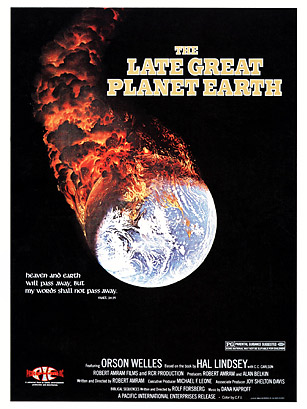
If you follow Hal Lindsey, you've probably changed the "end of the world" date in your calendar several times. His Late Great Planet Earth, which was the best-selling nonfiction book of the 1970s, predicted that the world would end sometime before Dec. 31, 1988. He cited a host of world events — nuclear war, the communist threat and the restoration of Israel — as reasons the end times were upon mankind. His later books, though less specific, suggested that believers not plan on being on Earth past the 1980s — then the 1990s and, of course, the 2000s. But Lindsey did more than just wrongly predict the end of days; he popularized a genre of prophecy books.
Adding stock to Lindsey's original claim, Edgar Whisenant published a book in 1988 called 88 Reasons Why the Rapture Will Be in 1988, which sold some 4.5 million copies. Whisenant once famously said, "Only if the Bible is in error am I wrong." When 1989 rolled around, a discredited Whisenant published another book, saying the Rapture would occur that year instead. It did not sell as well, nor did later titles that predicted the world would end in 1993 and again in 1994. The genre's most popular tales are in the Left Behind series, written by Tim LaHaye and Jerry Jenkins, which, though they do not predict an end date, provide a vivid fictional account of how Earth's final days could go. The 16 novels have sold more than 63 million copies worldwide.